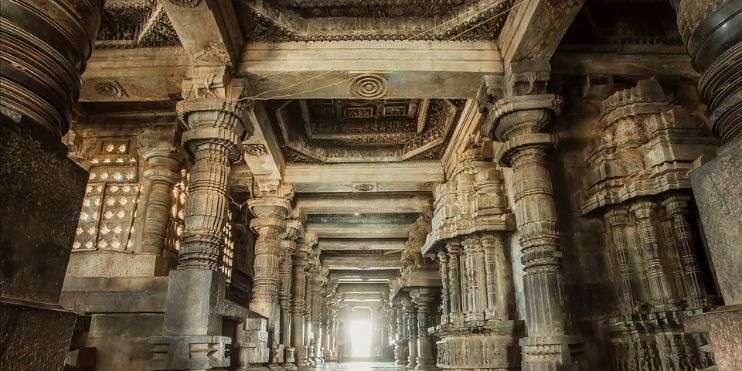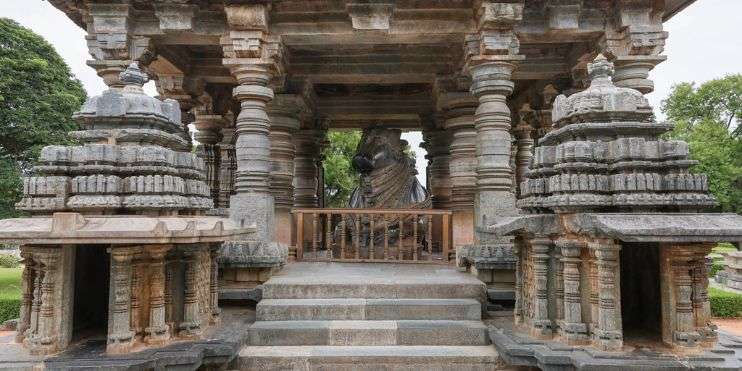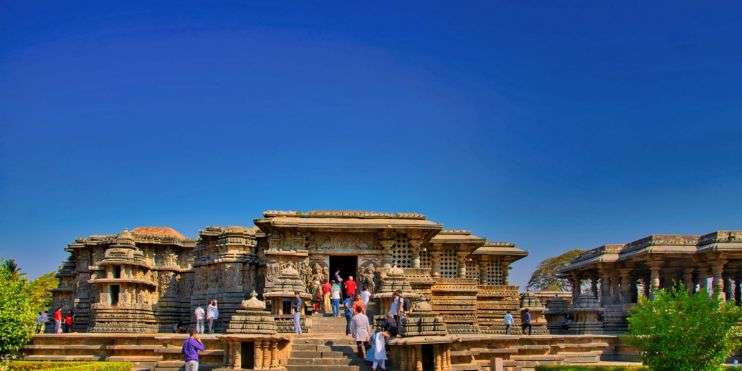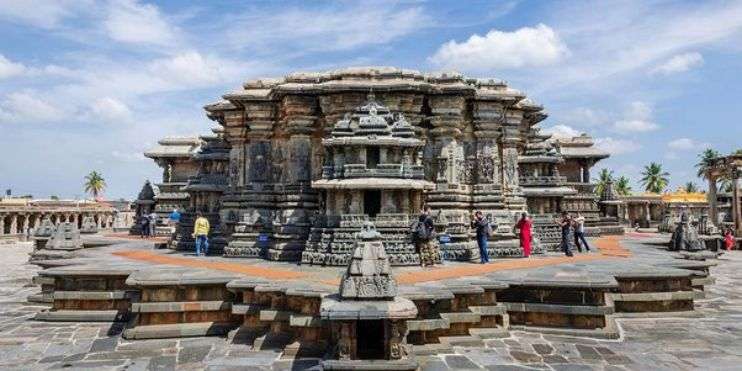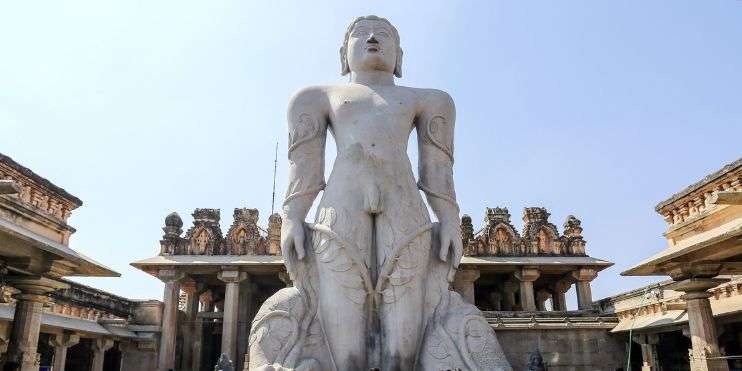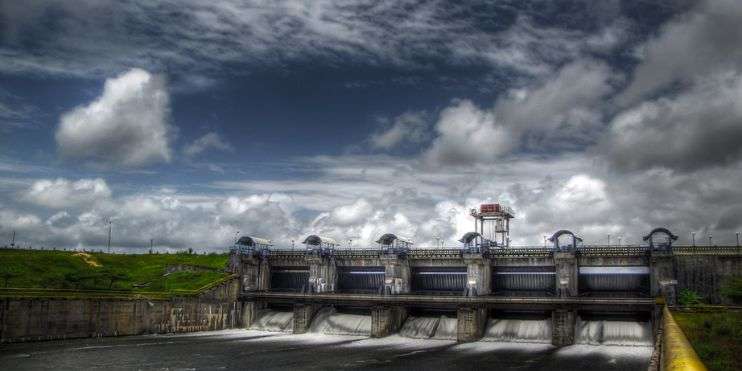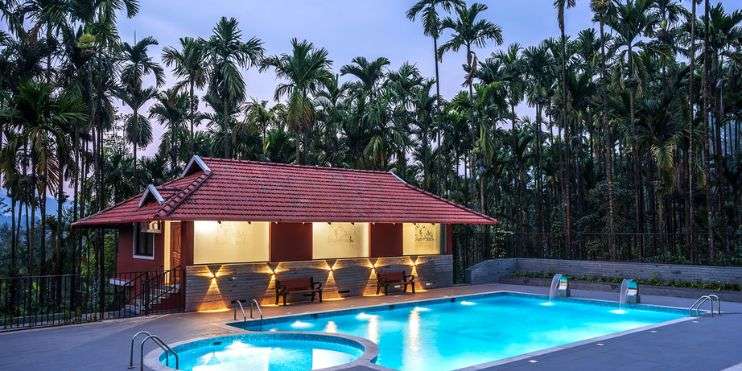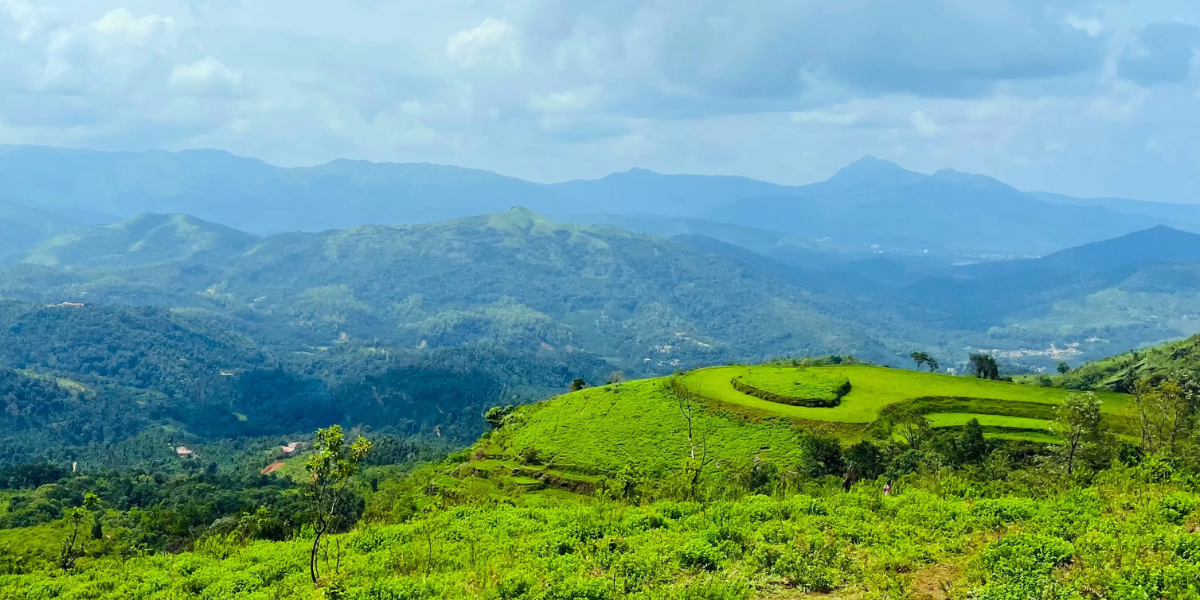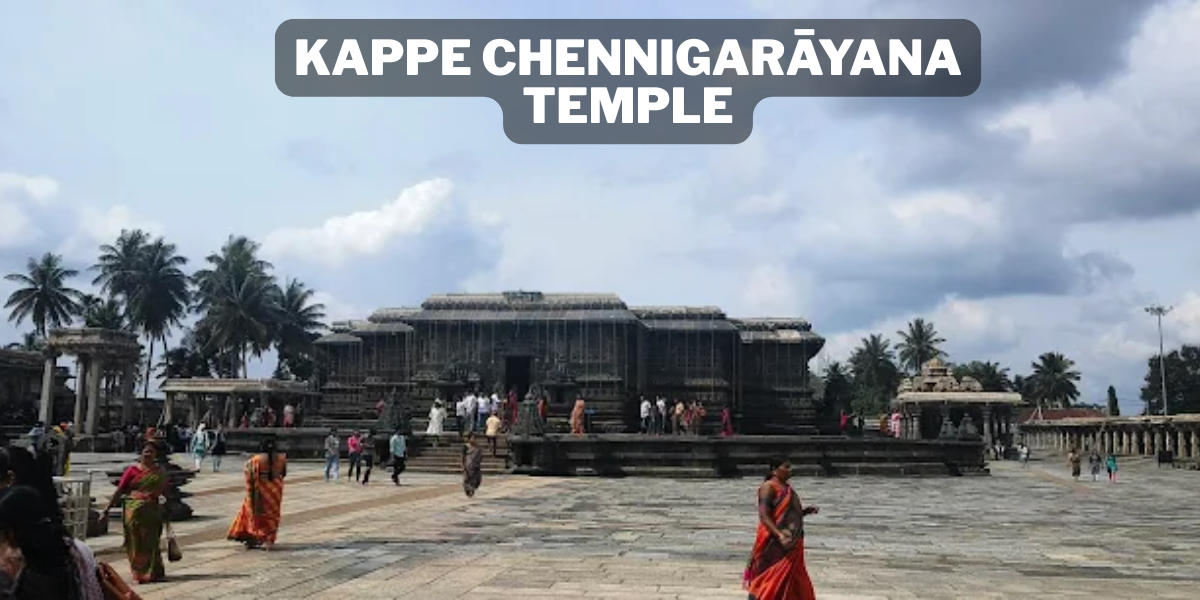Belur and Halebidu, two serene temple towns in Karnataka, are steeped in history, culture, and stunning craftsmanship. Once the capital of the mighty Hoysala dynasty, these towns are now among the most sought-after heritage getaways for families, culture lovers, and history enthusiasts. Whether you’re drawn to stone-carved stories or quiet countryside beauty, the places to visit in Belur and Halebidu promise an enriching escape into the past.
Timeless Charm of Belur and Halebidu: A Journey Through Karnataka’s Temple Towns
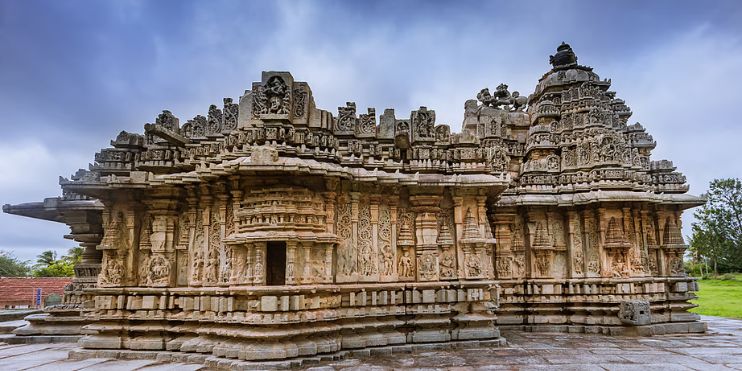
Located in Karnataka’s Hassan district, Belur and Halebidu are separated by just 16 km, making them perfect for a combined weekend trip. These towns showcase some of the finest examples of Hoysala architecture and have earned recognition as important cultural landmarks. Well connected to Bangalore, Mangaluru, and Chikmagalur, they are among the most convenient places to visit near Belur for those seeking a break from the hustle of city life.
Nearby attractions like the Jain pilgrimage center Shravanabelagola and the tranquil Yagachi Dam further enhance the region’s appeal. As you explore these temple towns, you’ll come across remarkable art, deep-rooted traditions, and historical milestones that shaped Karnataka’s cultural identity.
Legends in Stone: A Brief History of the Hoysala Dynasty
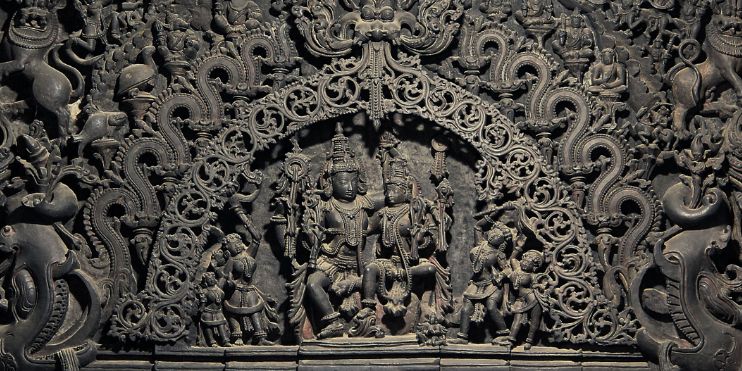
The Hoysala dynasty ruled large parts of southern India between the 10th and 14th centuries. Known for their patronage of art and architecture, the Hoysalas left behind an enduring legacy of intricate temple structures, many of which still stand in Belur and Halebidu.
At the center of this legacy are the Belur Chennakeshava Temple and Halebidu’s Hoysaleswara Temple. These structures exhibit the distinctive Hoysala style, recognized for star-shaped platforms, soapstone carvings, and elaborate friezes. These Belur Halebidu temples represent key achievements in South Indian architectural tradition.
Chennakeshava Temple – Belur’s Crown Jewel of Craftsmanship
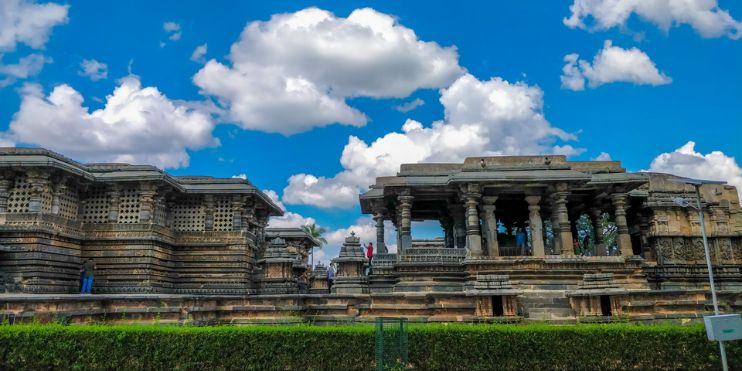
One of the most cherished Belur tourist places is the Chennakeshava Temple. This stunning temple, dedicated to Lord Vishnu, was built in 1117 AD by King Vishnuvardhana. Located in Belur town, it is easily reachable by road from Hassan or Chikmagalur.
This temple impresses with its detailed sculptures, polished stone finish, and narrative art etched into every wall. Visitors should especially look out for the Madanikas—celestial maidens in graceful poses—and the fascinating Narasimha Pillar, a partially rotatable column showcasing early engineering. A visit here highlights the brilliance of places to visit in Belur.
Hoysaleswara & Shantaleswara Temples – Halebidu’s Twin Marvels
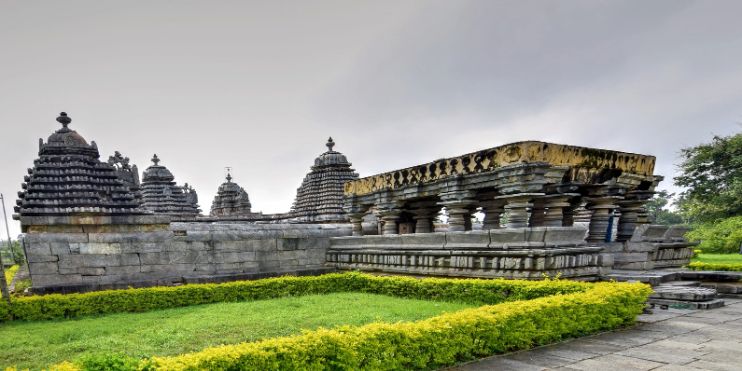
About 16 km from Belur, Halebidu features the twin temples of Hoysaleswara and Shantaleswara, both dedicated to Lord Shiva. Built-in the 12th century, these stand among the most impressive Belur Halebidu tourist places.
The temple walls display endless rows of Hindu deities, battle scenes, and animal motifs, all carved with precision and artistry. The peaceful atmosphere and open surroundings make this a welcoming place for exploration. The light at dawn and dusk adds a touch of magic to the already stunning soapstone figures. These temples form an essential part of any Belur Halebidu temple tour.
Belavadi – The Hidden Hoysala Wonder Few Know About
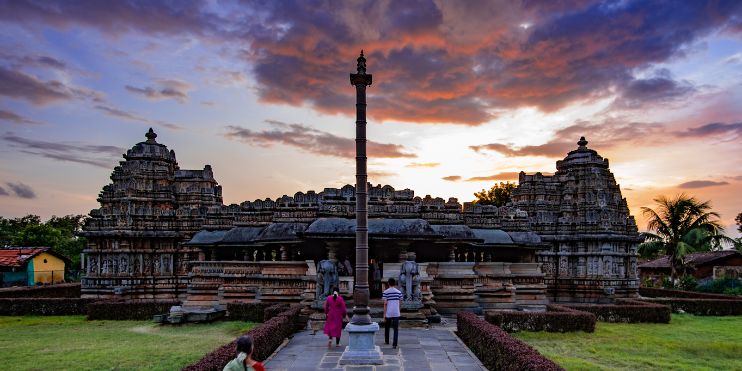
Just 11 km from Halebidu and on the way to Chikmagalur, Belavadi offers an off-the-radar experience among places to visit in Belur & Halebidu. The village is home to the Veera Narayana Temple, an elegant Hoysala structure that often escapes the notice of mainstream tourism.
Belavadi provides a quiet setting to admire a temple with three shrines and an intricately carved Navaranga mandapa. For travelers who enjoy discovering peaceful, lesser-visited places, this destination delivers a memorable experience. It’s a must-see for those seeking unique Belur attractions.
Koramangala Temples – Where History Hides in Plain Sight
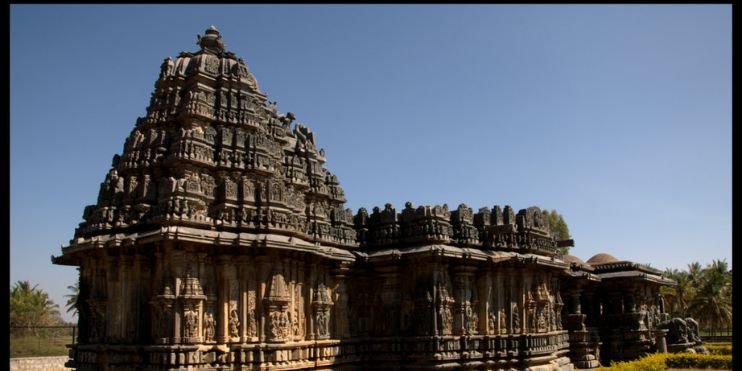
Koravangala, just 10 km from Hassan, features the Buccheshwara Temple, another architectural gem. This site adds depth to any tour of places to visit near Belur.
Built-in the early 12th century, this temple showcases twin sanctums, highly detailed ceilings, and artistic brilliance that speaks to the skill of Hoysala craftsmen. The calm setting and historical importance make it an inviting spot for thoughtful exploration. Among Belur Halebidu tourist places, this one remains a quiet highlight.
Paathaaleshwara Temple & Doddagaddavalli – Lesser-Known Spiritual Escapes

Two lesser-known Belur visiting places are the Paathaaleshwara Temple near Arasikere and the Lakshmi Devi Temple in Doddagaddavalli. These sacred sites reflect the early phases of Hoysala architecture.
Doddagaddavalli’s Lakshmi Devi Temple, built in 1113 AD, is one of the oldest Hoysala creations made entirely from soapstone. Meanwhile, Paathaaleshwara Temple features an underground sanctum that invites intrigue and reverence. Both locations offer travelers a quiet, spiritual side of Karnataka’s heritage.
Yagachi Dam – A Scenic Break Between the Temples

Located just 3 km from Belur, Yagachi Dam offers a peaceful natural setting, making it one of the more relaxed places to visit near Belur. It’s especially suited for families or anyone looking to take a breather.
The dam has boating options, picnic-friendly areas, and excellent views of the surrounding hills. The post-monsoon and winter seasons enhance the beauty of this spot. This site adds an element of nature to the cultural experience of visiting Belur Halebidu temple sites.
Narasimha Pillar – The Rotating Mystery of Belur

Inside the Chennakeshava Temple complex, the Narasimha Pillar stands out as a feature that draws both curiosity and admiration. This intricately carved column was designed to rotate, a clever architectural element from ancient times.
Although it no longer rotates to preserve its condition, it remains a highlight for visitors of all ages. It sparks conversations about innovation in medieval temple buildings. As part of the Belur tourist places, this pillar exemplifies the creativity of Hoysala artisans.
Hoysala Mahotsava – Experience Culture Come Alive
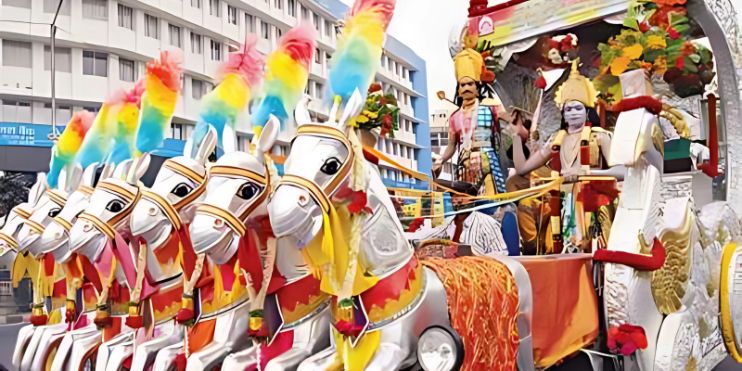
Each year, typically in March, the Hoysala Mahotsava transforms Belur and Halebidu into vibrant centers of music and dance. This event brings performers and spectators together in a celebration of classical arts.
Set against the backdrop of ancient temples, the festival is a great time to explore Belur Halebidu tourist places in a lively setting. For those who enjoy cultural travel, this festival period marks the best time to visit Belur and Halebidu.
Architectural Highlights: Why Hoysala Temples Are a Class Apart
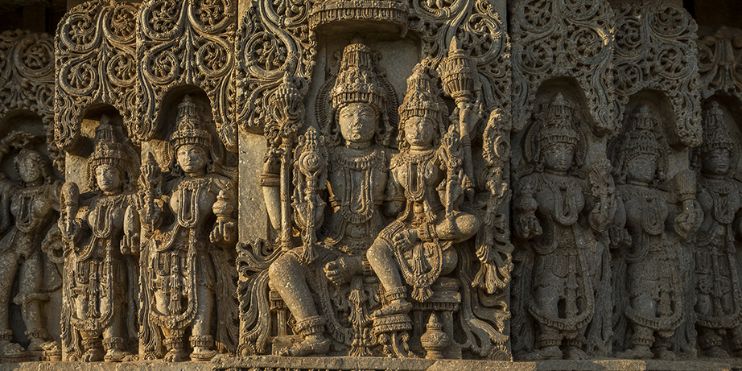
Across Belur, Halebidu, and neighboring villages, Hoysala temples are recognized for their artistic complexity. Look closely, and you’ll see narrative panels illustrating epics, animals, and floral designs, all brought to life in stone.
Architectural details like star-shaped platforms and bracket figures give these structures their distinct identity. Exploring these features helps visitors appreciate the vision behind the Belur Halebidu temples, turning a casual visit into a deeper cultural journey.
Planning Your Belur & Halebidu Trip: Everything You Need to Know
How to Reach
Belur and Halebidu are accessible by air, rail, and road.
The nearest airport is in Mangalore, about 165 km away, with additional flight options available from Bangalore. From the airport, taxis or buses can take you to the temple towns.
By train, the nearest big railway station is Hassan, and it’s conveniently linked to both Bangalore and Mysore.
For those traveling by road, state and private buses, taxis, or self-drive cars offer flexible options from cities like Bangalore, Mysore, and Chikmagalur to the various places to visit in Belur & Halebidu.
Best Time to Visit
The best time to visit Belur Halebid is between October and February, when the climate is pleasant for sightseeing. Monsoon brings lush surroundings but may interrupt temple visits.
Why a Local Guide Makes All the Difference
Guides at temple sites like the Belur Chennakeshava Temple enhance your visit with stories, details, and meanings hidden in the carvings. Their knowledge adds clarity and connection to each site.
Timings & Entry Fees
Temples generally remain open from sunrise to sunset. There is no entry fee, though donations are appreciated. Most Belur tourist places provide footwear stands and toilets and allow photography.
Stay with Us at Bynekaadu – Nature, Comfort & Charm in One Place
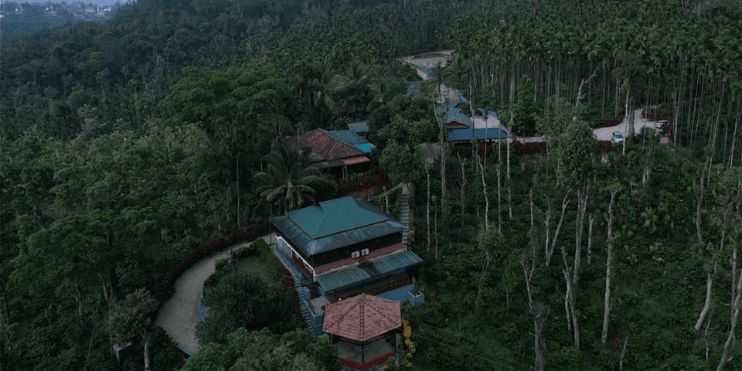
After a day spent exploring Belur Halebidu temples and surrounding attractions, retreat to the peace and comfort of Bynekaadu, our serene nature resort in Chikmagalur. Nestled in lush greenery, our retreat is the perfect blend of tranquility and accessibility, offering an ideal base for travelers eager to explore both heritage and natural beauty.
At Bynekaadu, we provide cozy cottages, delicious local cuisine, and warm hospitality that make us one of the best resorts in Chikmagalur. Conveniently located near all major Belur visiting places, our resort in Chikmagalur invites you to relax, recharge, and reconnect with nature. Among the top-rated resorts near Chikmagalur, we take pride in offering a rejuvenating holiday experience you won’t forget.
Conclusion
From the stunning Chennakeshava and Hoysaleswara temples to the peaceful Yagachi Dam and lesser-known gems like Belavadi and Doddagaddavalli, Belur and Halebidu offer an unforgettable tapestry of culture, heritage, and nature. This region captures the essence of Karnataka’s architectural and spiritual traditions while inviting you to explore and appreciate its artistry. Whether you’re observing a rotating pillar, boating on a scenic reservoir, or walking through soapstone halls, each site leaves a lasting impression.
For a fulfilling weekend journey through temple towns and tranquil retreats, the places to visit in Belur Halebidu reward you with stories, serenity, and discovery.
Planning your getaway? Stay with us at Bynekaadu and let our resort in Chikmagalur be your home away from home. Discover why we’re among the best resort in Chikmagalur for heritage-inspired relaxation.

